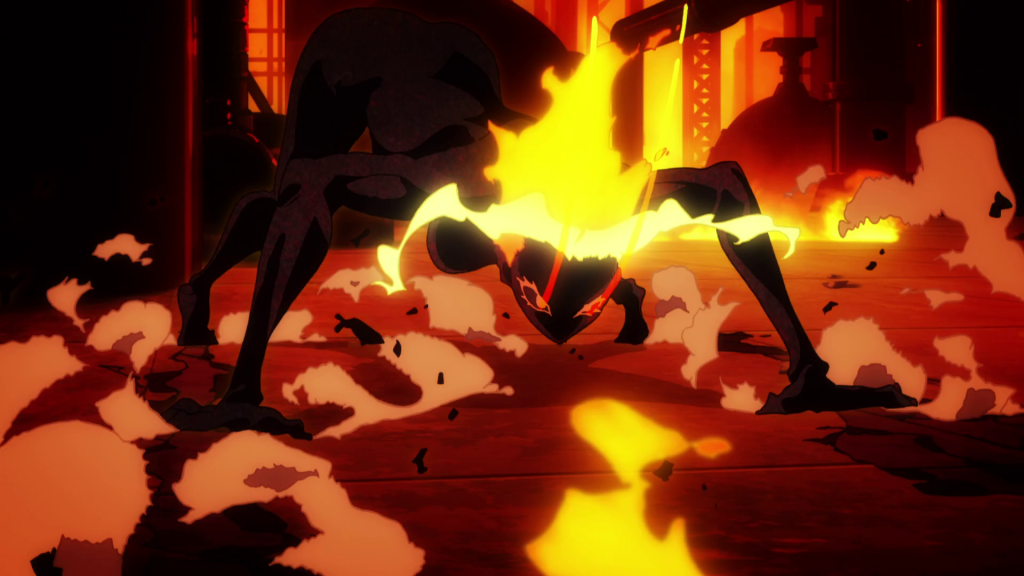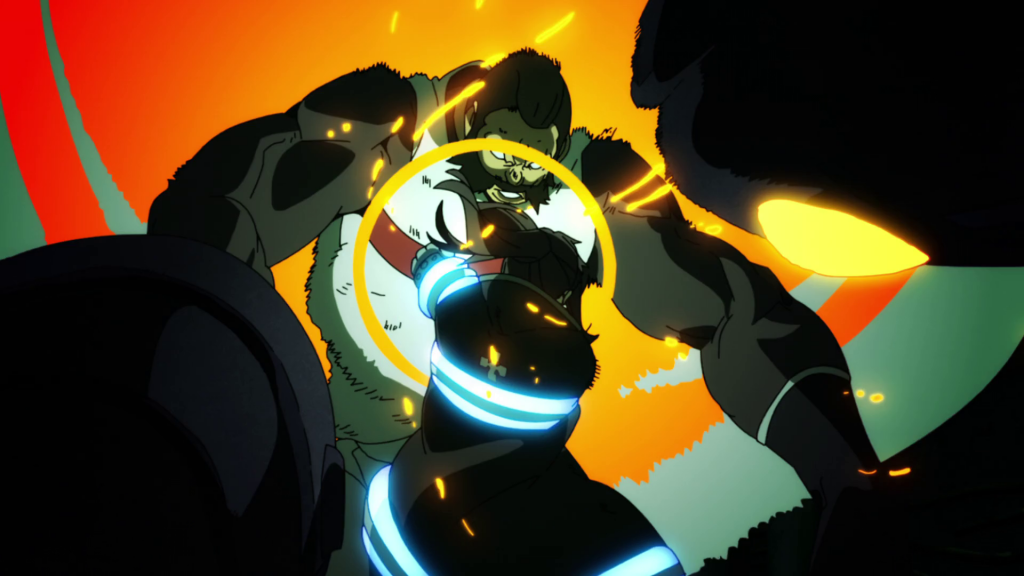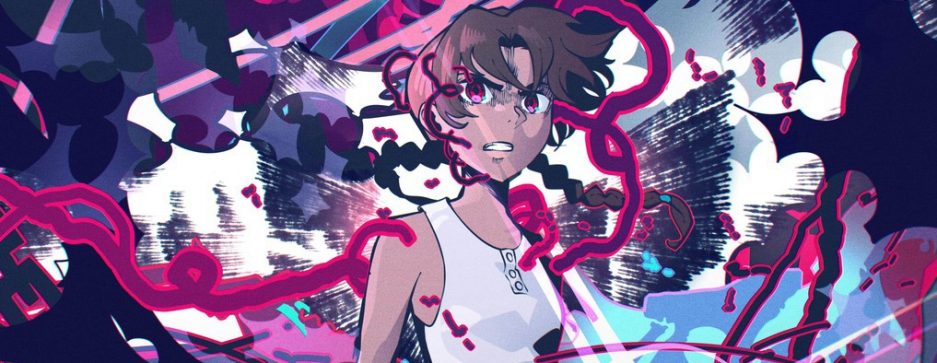Azur Lane #08
Key Animation: Weilin Zhang
Geth: Seemingly incapable of turning in anything less than jaw-dropping animation, Weilin Zhang set to impress yet again, this time demonstrating that even less than ideal circumstances cannot slow the young superstar down. Those circumstances would be the ones surrounding Studio Bibury’s first independent series: Azur Lane; where a disastrous schedule has arisen, stemming from an almost constant demand for action animation, with the addition of featuring more unique character designs than any series has a right to having. Throw in the usual hurdles which regularly plague TV productions throughout this industry, and you have an unfortunate situation where nothing short of near-inhumanly perfect management would be able to salvage this sinking ship.
Episode eight did not have that- not anywhere close, however it instead aimed to provide flavor of a different kind thanks to the episode-directorial debut of prolific animator Hironori Tanaka. To say the final result is rough around the edges would be a titanic-sized understatement, but we’re not here to dwell on the negative so I’ll say despite being a victim of all the aforementioned circumstance, episode eight featured no shortage of inspired or interesting action scenes, the final of which is where we can find Zhang at full display.
Convincing free-falling animation is a lot more difficult to manage than it might seem at first, because unlike cuts where characters are supported by the ground, the nature of falling requires a believable sense of weight and air resistance at all times. Weilin more than achieves that here through his volumetric drawings taking full advantage of detailed shading, as well as with the help of well-timed debris and snow to fill the otherwise empty areas of the shot.
I have also seen some praise for the way in which he handled the two contrasting parts in the last cut and it’s hard to disagree. Smartly portraying the deceleration caused by Javelin grabbing onto the other two by using the top of the screen as a sort of “reset”, for a lack of a better term. The foreground snowflakes and wind patterns are our reference points throughout the cut and their sudden change in intensity matches the equally sudden lack of free-falling. Extra credit to Ayanami’s arm socket for somehow staying in tact but we can chalk that one up to anime physics and also being part naval vessel… maybe.
Fire Force #19
Key Animation: Kazuhiro Miwa
Geth: Another appearance from Kazuhiro Miwa in one of these columns and I can safely guarantee that it won’t be the last Fire Force related one either. While his part was great as always, this episode also featured a number of other standout scenes worth mentioning, such as Yuki Sato’s dazzling effects, or Nobuhiro Nagata’s second contribution to the series following his stint on Vento Aureo. The fact that we are only just now seeing some of the staff carry over from JoJo’s Bizarre Adventure speaks both to how tight that schedule became, but also more importantly, how absurdly ahead Fire Force’s is. And that healthy schedule is what brings me back to Miwa, our topic of conversation here today. The main animator has been seen across a ridiculous number of episodes, sometimes even handling more than one action scene within them!
We are now at the point where it’s safe to conclude that what Miwa has managed to achieve on this show falls outside of the ordinary, even by his high standards, which have seen him grace a number of series with tremendous frequency. Eureka Seven director Tomoki Kyoda has previously praised both the ability and speed of Miwa, figuratively referring to him as a demon- a reference to the near inhuman qualities found in his skill set. A coincidentally fitting metaphor in hindsight if you ask me, seeing as how Shinra’s demon-like traits have been accentuated by Miwa’s action expertise time, and time again.
That expertise is part of why I chose his cuts to highlight here more than anything because while the schedule is strong, and opportunities plentiful, his output on Fire Force is still only possible due to his approach.
An approach which features familiar elements not only across every cut he’s turned in on this show, but more so looking at the majority of his recent career as well. This is an animator that is acutely aware of what works best for him and by sorting all those developed tools into a particular box, he can pull from it endlessly to quickly and efficiently string together action set-piece after action set-piece.


Miwa clearly has zero intentions of reinventing himself, and why should he when you have such an attractive output as this? There are the more obvious topical aspects which he sticks extremely close to such as how his effects carry similar smeary-edge patterns, heavy speed-lines, or the frequent but timely use of impact frames. However, even beyond the obvious he repeatedly falls back on foundation-related tools which are rarely obvious upon the first viewing. These are things like layout construction, camera pans and various timing mechanisms, all falling under this wide umbrella of familiar-but-good.
Ultimately, we will see him again, probably more than once as at least one of his cuts appear in the teaser PV. However, this was as good a time as any to uncover the magic of this Miwa-mystery as Fire Force heads into its final fight which, from the looks of it, should feature the man in question alongside many more.
Seishun Buta Yarou wa Yumemiru Shoujo no Yume wo Minai
Key Animation: Takashi Kojima
Blou: Seishun Buta Yarou wa Bunny Girl-senpai no Yume wo Minai wasn’t a title that caught my attention at all when it was announced. The title and visuals were big red flags and even if the PV had already showcased some glimpses of excellence, I wasn’t convinced by the production values either. But somehow the show managed to surprise me and change my opinion quickly. Seishun Buta is entertaining and pleasant to watch thanks to the cynic and cheeky main character, always ready for snarky line delivery and fun interactions. Not only that, the production was carried by young stars and A-1 Pictures’ (Cloverworks) regulars, injecting some life in those characters and more importantly making sure the key emotional moments were given proper treatment through cathartic acting.
Given what I mentioned above, the prospect of theatrical version sounded quite promising, especially given that the staff struggled to keep consistency until the end. Sadly they couldn’t reproduce the miracle and to put it bluntly the movie is quite the poor production.While the overall lack of ambition could be explained by the tight schedule, it also lacks exciting pieces of animation. Most of the big animators who worked on the TV series are missing and it translated into a movie deprived of truly moving and emotional scenes (still theoretically there in the script but not on screen).
That is until the epilogue scene, animated by the amazing Takashi Kojima. In order to portray joy, he puts a lot of care into hair and fabric motion. The exuberant girl moves carelessly, as if there were too much energy pushing her small body, thoughtful and appropriate acting for a child. The movie ends on a high note, though perhaps too late.
